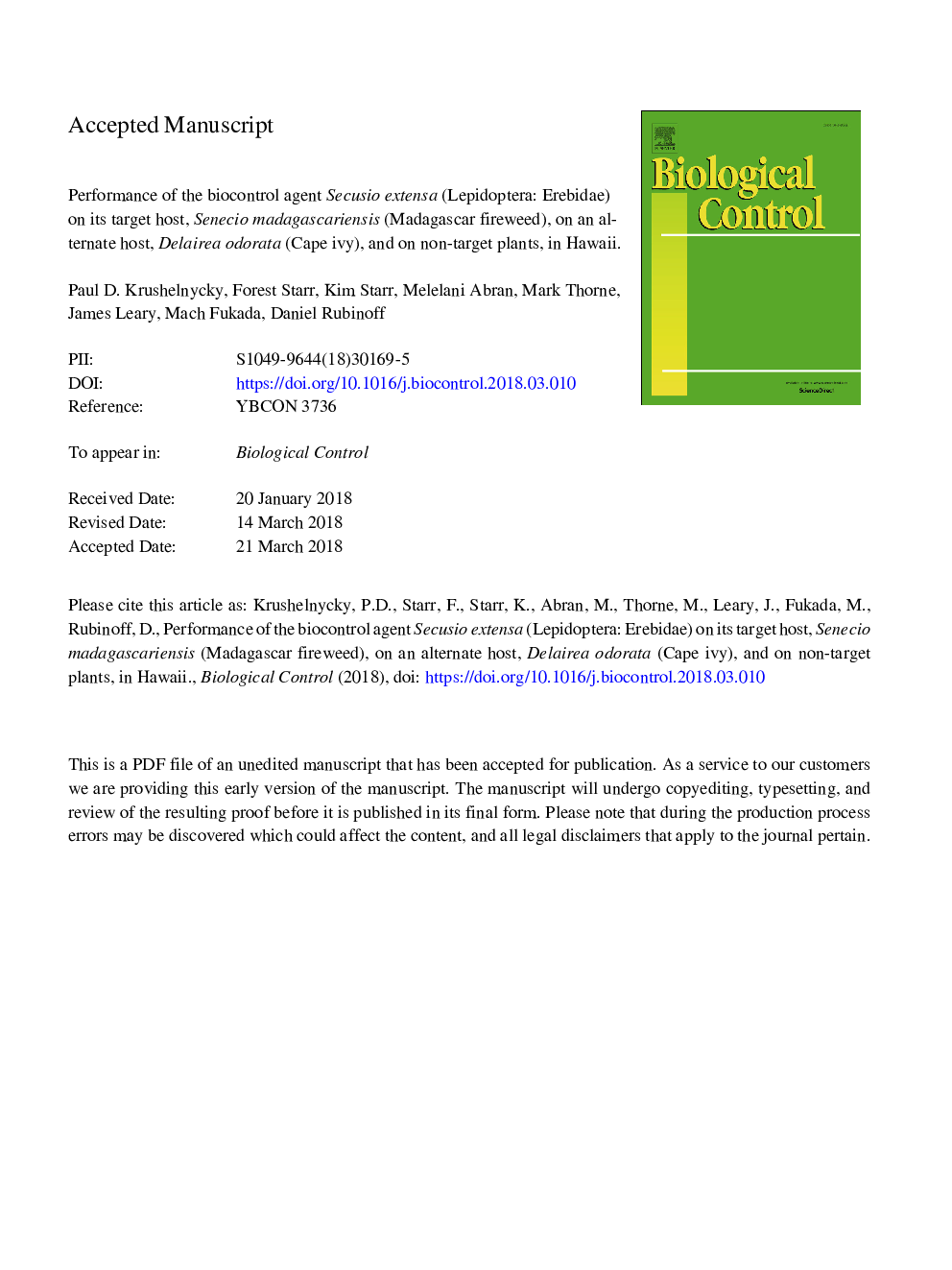| Article ID | Journal | Published Year | Pages | File Type |
|---|---|---|---|---|
| 8877690 | Biological Control | 2018 | 55 Pages |
Abstract
The lepidopteran herbivore Secusio extensa (Erebidae: Arctiinae) was purposefully released in Hawaii in 2013 to control Madagascar fireweed, Senecio madagascariensis (Asteraceae: Senecioneae), an invasive weed of rangelands and other open areas. In conjunction with this biocontrol effort, we conducted pre- and post-release monitoring of S. madagascariensis in field plots, and post-release monitoring of non-target plants. Secusio extensa successfully established on the two islands where it was released, dispersed widely, and even colonized a neighboring island. However, in the first three years after release, S. extensa could only be found sporadically and in low abundances on its target host. In contrast, it underwent population outbreaks on the related, alternative host, Cape ivy (Delairea odorata, Asteraceae: Senecioneae), which is also a noxious weed in Hawaii. In addition to D. odorata, we observed S. extensa to feed on only two other related non-target plants in the tribe Senecioneae, among 24 species monitored. In several microsites supporting higher densities of S. extensa on S. madagascariensis, larval abundances peaked during a short period in the spring, but were insufficiently high to cause substantial damage to affected plants. The causes for low larval densities of S. extensa on its target host are unclear. We found no strong evidence for parasitism or predation of S. extensa larvae. However, females preferred to oviposit on D. odorata over S. madagascariensis, and larvae exhibited a marginally significant preference for feeding on D. odorata over S. madagascariensis. This preference, along with lower nutritional quality of S. madagascariensis relative to D. odorata, may explain why S. extensa has been unable to build large populations on its intended target, but has done so on an alternate host. Clarifying the roles of these mechanisms may help predict the continuing performance of S. extensa in controlling S. madagascariensis.
Related Topics
Life Sciences
Agricultural and Biological Sciences
Agronomy and Crop Science
Authors
Paul D. Krushelnycky, Forest Starr, Kim Starr, Melelani Abran, Mark Thorne, James Leary, Mach Fukada, Daniel Rubinoff,
